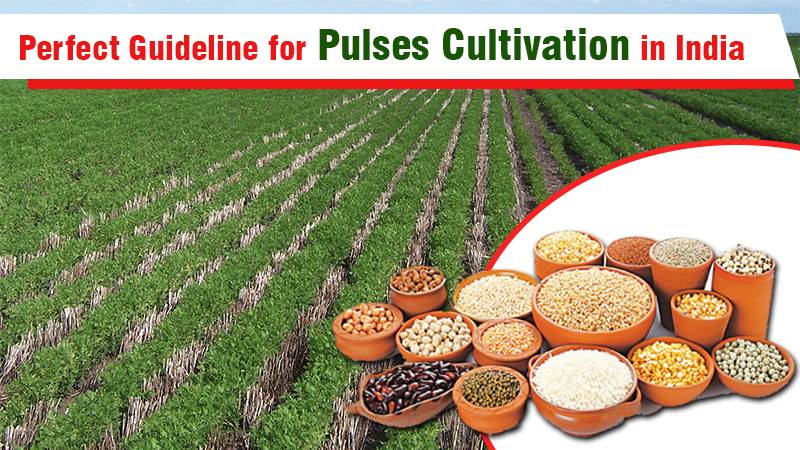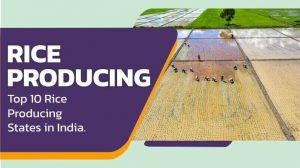Pulses are commonly known as Dal in India, which is a modest wellspring of plant protein. Some pulses crop like Gram, Lobia, Urdbean, and Moongbean are taken by domestic animals as green grain fodder.
Moong plants are likewise utilized as green manure which further develops soil fertility and adds supplements into the soil.
Various pulses crops are cultivated in India and the world, among them, significant ones are Gram, Pigeon pea, Lentil, Field peas, etc. There was a 239-lakh ha region in India under pulses crop production. From this space, 158 lakh tons production of pluses crop was gotten.
Climatic Requirement of Pluses Crops-
Pulses crops are developed in Kharif, Rabi, and Zaid during periods of the Agricultural year. Rabi crops require a gentle cold environment during the planting period, during vegetative to pod improvement cold environment, and during development/reaping warm environment.
Likewise, Kharif pulses crops require a warm environment for the duration of their life from planting to gathering. Summer pulses crops are habitants of a warm environment.
Seed is needed to pass numerous stages to produce final crop like germination, seedling, vegetative, blooming, natural product setting, advanced grain development, and harvesting.
Pulses Seed Treatment –
Seed treatment of pulses crop with fungicides (captan or thiram 2-3 g/kg seed) to forestall seed-borne illnesses and seed vaccination with Rhizobium and phosphate solubilizing microscopic organisms to upgrade nitrogen obsession and accessibility of Phosphorus prior to planting.
Planting Parameters for Pulses Crop –
Seed should be in pure form, disease-free, and not much physically damaged. In case of sowing is delayed due to another crop then the seed rate should be enhanced by 15-20 percent.
Fertilizer Application in Pulses Crop-
On a normal 20-30 kg nitrogen, 50-60 kg phosphorus, and 40-60 kg potassium for every ha ought to be applied for the acceptable yield of pulses crop. Rajma requires more nitrogen contrast with for example 100-120 kg/ha.
Sulfur applied 20-25 kg/ha brought about higher pulses crop yield. Soil utilization of 2-4 ppm Zn or foliar shower of 0.5 % ZnSO4 with 0.05 % lime have ended up being viable controlling in Zn insufficiency.
Utilization of natural composts 8-10 t/ha in sandy soil increment the seed value to a more prominent degree.
The compost ought to be applied either at the hour of planting or not long prior to planting so that they are set around 5-8 cm underneath the seed. Band arrangement of manures gives preferable outcomes over the conventional compost broadcast techniques.
The vegetable and their cooperative relationship with the microorganisms Rhizobium bring about the arrangement of root knobs that fix climatic nitrogen, which help to enhance pulse crop production naturally.
Weed Management in Pulses Crop –
Weed rivalry during the initial 30-60 days of the pulses crop is extremely touchy subsequently weed control is exceptionally fundamental during these stages.
Two mechanical/hand weeding, one at 25-30 days and another at 45-60 days after planting give fantastic weed control at the introductory phase of yield development.
Use of Fluchloralin (Basalin) 45% EC (1.75-2 kg for every ha in 800-1000 liters of water prior to planting and ought to be all around fused in the soil prior to planting.
Pre-emanant use of Alachlor (Lasso) 50 EC (3 lit/ha) or Metribuzin (Sencor) 70% WP (0.5kg/ha) in 800-1000 lit of water inside 2 days after planting controls wide leaved weeds.
Utilization of pre-planting/pre-new weedicide followed by one hand weeding and digging at 30-50 days is best.
Irrigation Method for Pulses Crop –
Pre-Kharif planted pulses crop during the long stretches of February to walk needs 2-3 watering at 15 days span following 20 days of planting which is the most basic stage for expanding yield and size of the plant.
Yield planted in June, one or two pre-monsoon watering may be given according to the prerequisite. After the beginning of the monsoon, there is no need for watering except for the increment of the delayed dry season during the regenerative time of development, a couple of watering might be needed.
On light-textured soils, 1-2 watering at spreading and pod improvement demonstrate profoundly useful in many winter pulses crops.
Watering ought to be kept away during the dynamic blossoming period in any case bloom shedding and inversion to vegetative development might happen. Great seepage/drainage system ought to be accommodated better return of pulses crop as they are not that tall crops.
Harvesting of Pulses Crop –
The Pulses crop plants are cut as close as ground level. The reaped plant ought to be left in sun for drying for not many days on the sifting floor. Threshing of pulses crop ought to be done either physically (beating the units with sticks) or by stomping on under the feet of bullocks.
However, these are traditional methods of threshing, modern high-tech threshers are best for high production with minimum loss. Pulses crop seeds ratio with pods is near about 50-60 percent.
The sifted and cleaned produce ought to be further sundried with the goal that the grain moisture content might be decreased to 10-11% percent.
Download KhetiGuru Mobile Application for more details about Pulses Crops in India.
Visit our page for more information about Tractor, Agricultural implements, Tractor Price, Tractor Videos, and Tractor Games.



